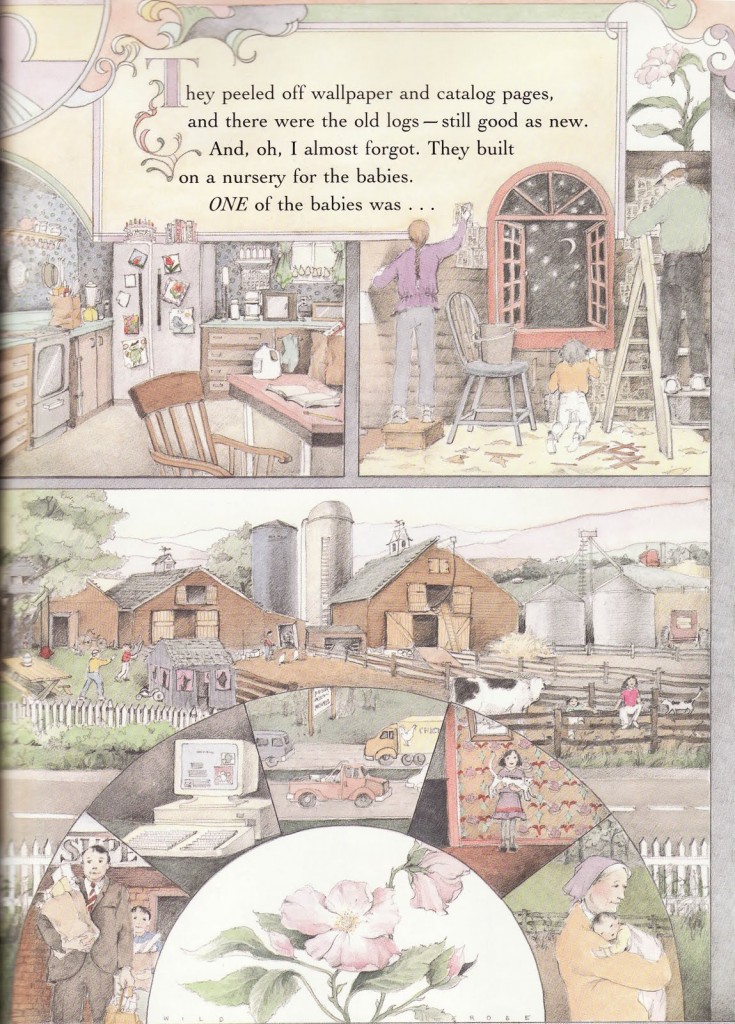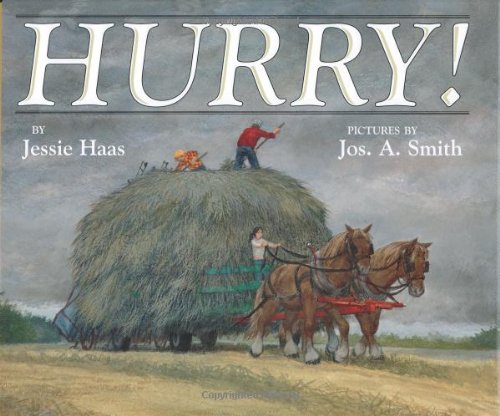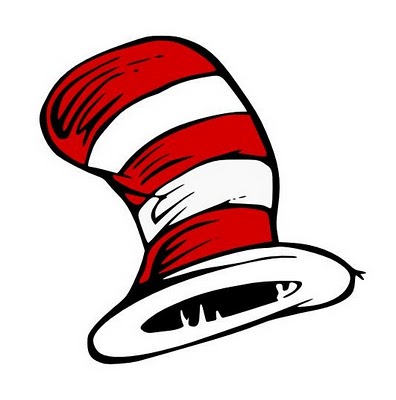.jpg)
Harold and the Purple Crayon has surprises and secrets. It was written more than 50 years ago by Crockett Johnson, who also penned the delightfully simple pictures that illustrate the story. But Johnson was a professional cartoonist, which may explain why the pictures seem to steal the show, creating a story that keeps on going and going. There’s over 60 pages (and 60 drawings) in “Harold and the Purple Crayon,” and they’ll give any children the joy of a good old-fashioned comic strip: they’re simple and they’re funny.
I love the enormous purple zig-zags that Harold draws on the book’s title page, and how they segue into the beginning of the actual story. Harold looks at the blank page and realizes he needs a moon for his walk in the moonlight – then draws one onto the page itself. A very simple drawing shows his half-completed moon over the half-finished purple horizon. But in the next drawing, the moon is finished, and Harold is now drawing the edge of a sidewalk…
Harold has the wide eyes of a baby – and a baby’s confidence. Soon he’s drawing three lines to form a road vanishing into the horizon, but then takes “a shortcut” off to the left. It’s a blank page, of course, but it led “right to where Harold thought a forest ought to be.” Harold’s magical crayon may make children want to start drawing themselves. By the next picture, Harold’s already drawn most of the line for a tree trunk – and six purple stubs that suggest grass. “It turned out to be an apple tree,” writes Johnson – because Harold has drawn nine circles in its leaves suggesting apples. Then he draws a dragon under the tree (to protect the apples until they’re ripe).
The book is a celebration of fantasy – by a professional artist who understands the power of imagination. And he plays a fascinating trick on Harold. The boy’s shaking hand makes the purple line jiggle – and Harold accidentally draws the waves of an ocean, which swallow him up. What to do? Harold draws a line over the ocean, and uses it to hoist himself up while he finishes drawing the rest of a boat. He draws a sail, and then when he reaches land: an anchor. (And then – nine pies, for a picnic on the beach!)
“He hated to see so much delicious pie go to waste,” Johnson adds, so Harold draws a skinny moose to eat it all up – plus “a deserving porcupine” with a smile on its face.
But he’s not finished playing pranks on his crayon-wielding doppelganger. There’s another weird trick when Harold draws himself a mountain. But he falls off the top before he’s finished drawing the other side – so he’s falling into thin air. Falling – and upside down – Harold draws a wide circle which becomes a balloon. Soon he’s added a basket and he’s floating below the moon. But he still can’t see his house.
Harold eventually draws a house – with windows – then draws more windows. Soon he’s drawn a whole skyscraper, filled with windows. And in a laughably complex picture, Harold has drawn an entire city with 11 skyscrapers, each filled with windows. “He made a whole city full of windows,” writes Johnson. “But none of the windows was his window.”
I know that feeling.
Harold draws a funny policeman with a round nose, but the policeman isn’t much help. But despite all the craziness, the book still finds its way to a cozy ending. And it’s Harold himself who has to solve his predicament. Where is his window? Why, it’s always around the moon, of course. Harold draws a frame across the window, and then draws his bed beneath it, and crawls under the covers.
“The purple crayon dropped on the floor. And Harold dropped off to sleep.”


